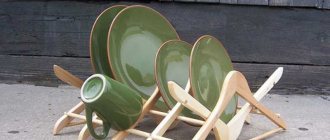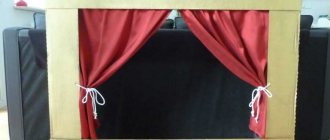Hello dear readers and subscribers. If you have an unnecessary used fire extinguisher, I suggest you an article on the topic: What can you make from an old fire extinguisher with your own hands. Let's bring it back to “life” by transforming it into something useful.
Unnecessary, old fire extinguisher? What can be done?
I recommend articles:
How to use video tapes that are not needed.
DIY crafts from tires for the garden. 12 ideas.
Make your own from old tights?
Do-it-yourself fire extinguisher washing.
We will need:
- fire extinguisher
- compressor
- adapters
- pressure gauge
- gun
Remove all excess from the fire extinguisher. We leave only the body. Screw on the inlet valve. We attach a pressure gauge and a washing gun. We fill in water through the inlet valve, connect the hose from the compressor and pump up air.
"Important! Pour water to 1/4 of the container's volume. You need space for air."
We press the trigger of the gun and water rushes out under pressure. You can wash your car, carpet, paths in the garden.
Car wash
Have you dreamed of owning a personal washing machine, but lacked the finances?
This idea is especially for you! This type of washer will work on the compression principle. To implement it, it is necessary to remove all unnecessary parts from the fire extinguisher. Using an adapter, we install the inlet valve, then attach a pressure gauge and a special gun for releasing water. The adapter can be purchased on the market in the plumbing department; the main thing is to choose the desired thread diameter.
To operate the washer you will need an air generator, connect the hose and fill the fire extinguisher container with water so that there is room left for compressed air. We create the necessary pressure and you can wash the car.
DIY foam generator from an old fire extinguisher.
We need a fire extinguisher with a gas generator. To convert an old fire extinguisher into a foam generator, we will disassemble the shut-off and starting device. Unscrew the tube together with the cylinder. We cut the gas generator into two identical parts with a grinder. We make the upper part 4 centimeters. This will be a foaming tablet. To make the tablet itself we will need:
- Mesh with middle cell
- Metal sponge for washing
Do-it-yourself foam generator for washing from a fire extinguisher. We collect the foaming tablet. Cut a circle out of the mesh and place it in the upper part of the gas generator. We put a metal sponge and a mesh again.
We drill a hole for the movement of foam. Screw it into the bottle. We seal the holes with sealant and make another hole in the body. We install the fitting and put the coupling on the tube.
And screw the prepared foam tablet into another hole. We will use new hoses purchased at the store. Do-it-yourself foam generator from a fire extinguisher - ready.
Making homemade goods
Take an empty fire extinguisher and unscrew the valve.
applies markings to the top of the fire extinguisher body. To do this, he turns it over, and with a marker, placing a block of the required thickness under it, applies markings along the entire circumference. Then, along this line, he cuts off the top from the body; it will no longer be needed.
Now let's make the legs for the stove. The author takes a piece of profile pipe with a cross section of 50x25 mm. He marks it into three equal segments, if I’m not mistaken, 16 cm long. Then he divides these segments in half.
Then he draws lines at an angle, as shown in the photo. The angle is approximately 30 degrees. After marking, he cuts out the excess and cuts the workpiece, you get three parts like this. They are bent and secured by welding at the bend.
At this stage it returns to the body. The legs prepared at the previous stage need to be welded to it. The author did not just weld them to the body, but first attached them, outlined them and cut out openings into which he then welded the legs using a magnetic square. Apparently, having secured the legs in this way, he planned to increase the draft in the oven, or he simply got confused. I simply drilled three holes in the legs, for this purpose I first set marks and cored them. Therefore, my first assumption is more truthful. And the design looks more like a rocket.
Here the author began to manufacture the loading part (firebox). To do this, he uses a section of profile pipe with a cross-section of 100x100 mm. Length approximately 20 cm (maybe a little more). On one side, I made markings on the edges, as shown in the photo, and cut off the end, resulting in a bevel of approximately 30 degrees.
Then I applied the finished part with the cut side to the body and traced it along the contour. I removed the part, drew the markings and cut out a rectangular opening along the lines. Then he welded a firebox into it. Do not forget to clean the welds, this will make the structure look more neat and aesthetically pleasing.
I made a burner on which food will be cooked. For this I used a 10x10 mm square rod. From it I cut two pieces, each 20 cm long. Then I marked them in half, and welded them crosswise at these points. All seams were carefully cleaned. I immediately made grooves for the sides of the hull. I placed the part on top of the body and lightly tapped it with a hammer so that the cross was slightly concave inside the body, so the dishes would be more stable.
I made a door for the firebox.
The stove body was painted with heat-resistant paint.
Testing a rocket stove, cooking meat in a frying pan. The oven copes with this task perfectly.
This is how it turned out to make a rocket oven with your own hands from an ordinary fire extinguisher!
The process of making a camp stove is also shown in this video:
Popular homemade products on our website
- Do-it-yourself rocket stove for the garage: drawings,…
- DIY rocket oven (39 photos)
- Rocket stove from a gas cylinder: drawings, photos, videos
- Homemade stove from a fire extinguisher
- Homemade compact wood stove (35 photos of production)
- Do-it-yourself furnace for melting aluminum (21 photos...
- Homemade stove from a heating radiator (38...
- Stove for a cauldron made from wheel rims: 31 photos…
- Do-it-yourself sauna stove: drawings, 14 photos of production
- Do-it-yourself powerful camp stove (38 photos of making)
- DIY collapsible rocket stove (51…
- Do-it-yourself stove for a cauldron: dimensions, photos,…
- Do-it-yourself sauna stove made of metal: photo,…
- Homemade stove of the “Buleryan” type: detailed photos...
- Homemade rocket stove
Homemade compressor from a fire extinguisher with your own hands.
To make a compressor, we need a fire extinguisher and a whole body, without holes. We will use:
- Air and water pressure switch. Two in one.
- Moisture filters - 2 pcs.
- Reinforced hose
- Adapters and crosspieces.
We disassemble the old fire extinguisher and drill a hole in the lid hole and cut the thread. We wrap it with FUM tape, put on the gasket and screw on the old cap. We install the adapter and crosspiece. At the edge we use a tee with a reducer. On the other side we install a pressure gauge.
"Important! Don't forget to use a filter in front of the gearbox. Orient the drain hole downwards. Don't forget the gaskets."
Do-it-yourself compressor from a fire extinguisher - ready.
How to make a fire extinguisher with your own hands for your home?
Compressor
Another ideal way to make good use of your old fire extinguisher is to turn it into an air compressor with a receiver. This will be an excellent solution for those who do not intend to use the compressor often, but at the same time it is very necessary for some type of work. Such homemade equipment will help you save a lot of money.
You will need the following tools and parts:
- body from an old fire extinguisher;
- power unit;
- compressor;
- hose;
- tee;
- self-tapping screws;
- drill;
- soldering iron;
- screwdriver.
It is best to choose a large volume fire extinguisher. All you need from the device itself is the housing. Everything else needs to be pulled out and dismantled, and the insides must be thoroughly washed. It is recommended to check the receiver separately so that later it works properly together with the compressor.
Next, install the safety valve and pressure gauge. Then a ball valve is installed to supply compressed air. The main thing is to pay attention to all places where parts are fastened: they must be airtight. The tightness will be ensured by a special fume tape. The last step will be installing the compressor. It must be tightly screwed to the structure and work properly. After checking the equipment, you can consider the device ready for use.
How to make a device from a blow gun?
The performance of such sandblasting depends on the power of the compressor. For production you need:
- Blow gun.
- Tee.
- Outlet nozzle with clamping nut.
- Ball valve. It will serve as an abrasive supply regulator.
An ordinary plastic bottle or a small fire extinguisher is used as a container. A tee is screwed onto the gun. A tap and a sand container are mounted to the upper branch, and a discharge nozzle is mounted to the second free branch.
More complex crafts
As you gain certain skills, you can move on to more complex crafts. Already at school age, interest in other technologies appears. Attention is paid to quality of execution, volume and layout.
Volume projects
Volumetric crafts are created in different ways:
- Volumetric figure. An example would be a campfire, a common cause of fire. Logs (cylinders of thick paper) are laid out on a sheet of cardboard; a bunch of “flames” cut out from colored paper in red, yellow and orange are collected in the center.
- Three-dimensional pictures are made in the form of a double-leaf postcard made of thick paper. On the inside of one of the halves, various figures are glued to the bent edge: an image of a fire, trees, which are pressed by the second flap, but when it is turned away, they take a vertical position. On the second half, a drawing or appliqué is made. When positioned vertically, it creates the main background of the picture.
#BetteratHome How to use a car fire extinguisher to your advantage: 4 practical options
A fire extinguisher has a service life, this is not a very happy fact, because you have to periodically change this device. But what to do with an old or used device? Just throw it in a landfill? Take your time. Yes, you won’t be able to make a barbecue from a small-capacity fire extinguisher like you can from a large cylinder, but there are other, no less useful options for its secondary use. For example, the author of the YouTube channel Stroyhak proposed as many as four options for consideration, but first you need to do some manipulations, which we will discuss in detail in this article.
Dough crafts
Salt dough successfully replaces plasticine. It is also malleable, but when hardened it becomes hard and can retain its shape for a long time. This blank can be painted and varnished. Dough recipe:
- For 200 mg of flour add 150 mg of table salt and 5 tbsp. vegetable oil.
- The components are diluted with water to the desired consistency.
From the prepared plastic mass you can easily fashion a fire truck and a helicopter, houses engulfed in flames, emergency workers, etc. The workpiece is placed in the oven and dried at a temperature of +70...+80 0 C for 1 hour. Accelerated drying is provided at a temperature of +110...+120 0 C for 25-30 minutes. After cooling, the hardened workpiece can be painted in any color using acrylic paints.
Classification
There are manual and automatic fire extinguishers - this is a classification based on the principle of operation. Manual devices are started by a person immediately after detecting a fire. Automatic fire extinguishers do not require human presence to operate Such devices are installed in rooms with a high level of fire hazard. As soon as the temperature exceeds preset values, the fire extinguishing system is automatically activated.
Types of fire extinguishers
Pros and cons of homemade products
The advantages of a homemade device include:
- simplicity of design;
- ease of manufacture;
- high maintainability;
- no manufacturing costs;
- efficiency, ability to perform assigned tasks.
Disadvantages should be considered:
- relatively low strength;
- the device can only work in small pools with low volume;
- the quality of work depends on the level of training and mastery of tools.
Craft product Fire extinguisher Waste material
This fire extinguisher is made of waste material: a plastic bottle, a cup of yogurt, a tube of liquid soap, polyurethane foam. To make it heavier, concrete was poured into the bottom and stuffed with polystyrene foam. We selected very good poems:
Their armor sometimes does not save them from pain, But no matter what fire stands in the way, Until victory they do not leave the battle, And I ask fate: “Save them in battle”!
In general, the whole family worked. They tried very hard, they did it with soul. When the work was handed in, the organizers were very delighted. But as a result, they didn’t even mark it! We were very upset. I wanted to take my work back after the results were announced, but they didn’t give me anything like that. So it’s standing there, at the exhibition, in the fire station.
The work is original! A big minus for the organizers! In our competition regulations it is immediately stated that prize works are not returned and are then kept in the Museum of Fire Glory.
I finished writing: great poem!
Thank you, Irina, for your support! I was really sad, so I didn’t even post my work on the blog.
Elena, such an attitude really leaves an unpleasant aftertaste. I think there is only one way out for children - to write thanks themselves on behalf of the firefighters and send them by mail or via the Internet. Of course it’s easier when Santa Claus congratulates.
Couldn’t the school itself congratulate you on its own?
Please convey to your boys our congratulations from all site users.
And special thanks to you! Do not despair! C'est la vie, as the French say. Even children's competitions have their own intrigues.
We will definitely use your ideas.
PS While I was writing, I saw that Dvataya had a similar solution.
The school will definitely congratulate you at the end of the quarter, at the line. Thank you!
How to assemble the main unit: materials and technology
So, the main operating principle of all four future homemade products is the use of high pressure. And to control it, you need to modify the cylinder, and this will require additional parts.
PHOTO: YouTube.com The main problem in finding parts is the M22 metric thread with a pitch of one and a half, which is located in the neck of the cylinder. Finding an adapter for such a thread is not easy, but you should look for it in plumbing stores
PHOTO: YouTube.com For such an adapter you need to prepare a suitable crosspiece, an adapter with a tap, an adapter with a tap and fitting, and a pressure gauge to control the pressure in the cylinder PHOTO: YouTube.com You can see the assembly sequence in the photo: the adapter for the cylinder is attached to the crosspiece, at the opposite end ─ pressure relief valve, on the sides - a pressure gauge through an adapter and a valve with a fitting for connecting a compressor and hose
PHOTO: YouTube.com For a sealed assembly, the author used plumbing thread. In order for it to hold well, the threads of the adapters must have notches, this will prevent it from slipping. If they are not there, notches can be made using attached pliers. You need to wind the thread along the thread and the end - several skeins crosswise. It would be a good idea to apply sealing grease over the thread.
PHOTO: YouTube.com The assembled structure looks like this. Be sure to check it for leaks: fill the container with air, then close it and apply foam to the joints. Such a cylinder can easily withstand pressure up to 8-10 atmospheres, and you won’t need more
Marking
All necessary information about the fire extinguisher can be found on its body. The text must be written in Russian. The body contains information about the type of fire extinguisher, manufacturer's address and trademark. The owner of a fire extinguisher will be able to read what types of fires can be extinguished by this product, what it is filled with, etc.
Marking of fire extinguisher cylinder
A set of pictograms allows you to find out how to activate the device and what classes of fire cannot be extinguished with its help. The body must also indicate the total weight of the fire extinguisher and the weight of the substance with which it is filled.
Classification by trigger method
Additional recommendations
If you made a fire extinguisher with vinegar and baking soda, do not allow these components to come into contact while storing the product. When combining soda and vinegar, you must open the bottle cap. If the flame is too large and a homemade fire extinguisher is not able to cope with it, leave it and leave the room.
Rules for working with a fire extinguisher
Only a properly manufactured fire extinguisher and compliance with safety rules will eliminate the source of the fire and prevent unpleasant consequences.
What is a fire extinguisher
A fire extinguisher or extinguisher is a special device whose task is to extinguish a fire. The extinguishing process is carried out using a special substance located inside the fire extinguisher. It extinguishes the source of fire. The device can be mobile or portable. The first type is used to extinguish large areas of fire, and a portable fire extinguisher is mainly used at the early stage of fire spread.
A fire extinguisher is the primary equipment that is used in case of detection of a fire and allows it. Design and use of a fire extinguisher. The regulation of the number of fire extinguishers and their volume in organizations depends on the type of premises.
Benefits of crafts
The purpose of such children's creativity:
- introduce children to the rules for handling flammable objects;
- create an algorithm of actions in case of fire;
- teach respect for property and nature.
Children get great pleasure from creating masterpieces with their own hands. At the same time, they master fire safety standards and develop their imagination.
Given the complexity of the topic, the child will need adult help. Making crafts together brings parents and children closer together and evokes a lot of positive emotions.
Skills such as fire safety are studied in special classes.
To reinforce the material, children are often given an assignment: to make a craft on a fire theme. Where to start and what technique to choose?
Plasticine models
One of the first craft materials that a child gets acquainted with in early childhood is plasticine. You can make a beautiful fire truck out of it.
- Two large parts are formed from red plasticine - the base and the cabin, which are connected to each other.
- Windows made of thinly rolled white plates, yellow circles of headlights, a small blue signal light and a black bumper (a strip of black plasticine at the front bottom of the cab) are fixed to the cab.
- Thin strips and a number (01) made of white plasticine, as well as a fire hose coil in the form of a spiral made of gray plasticine flagellum, are installed on the base.
- The wheels are made of 2 parts: first, a disk is formed from black plasticine, a notch (tread) is applied to it along the perimeter, and a yellow circle is attached in the center.
- The ladder is made of gray material: cylinders with a diameter of 5-7 mm are formed and installed in parallel. Steps of the same color are attached to them.
Plasticine is a very malleable material. In addition to the car, you can make figures of firefighters out of it. A firefighting helicopter or airplane looks modern.











